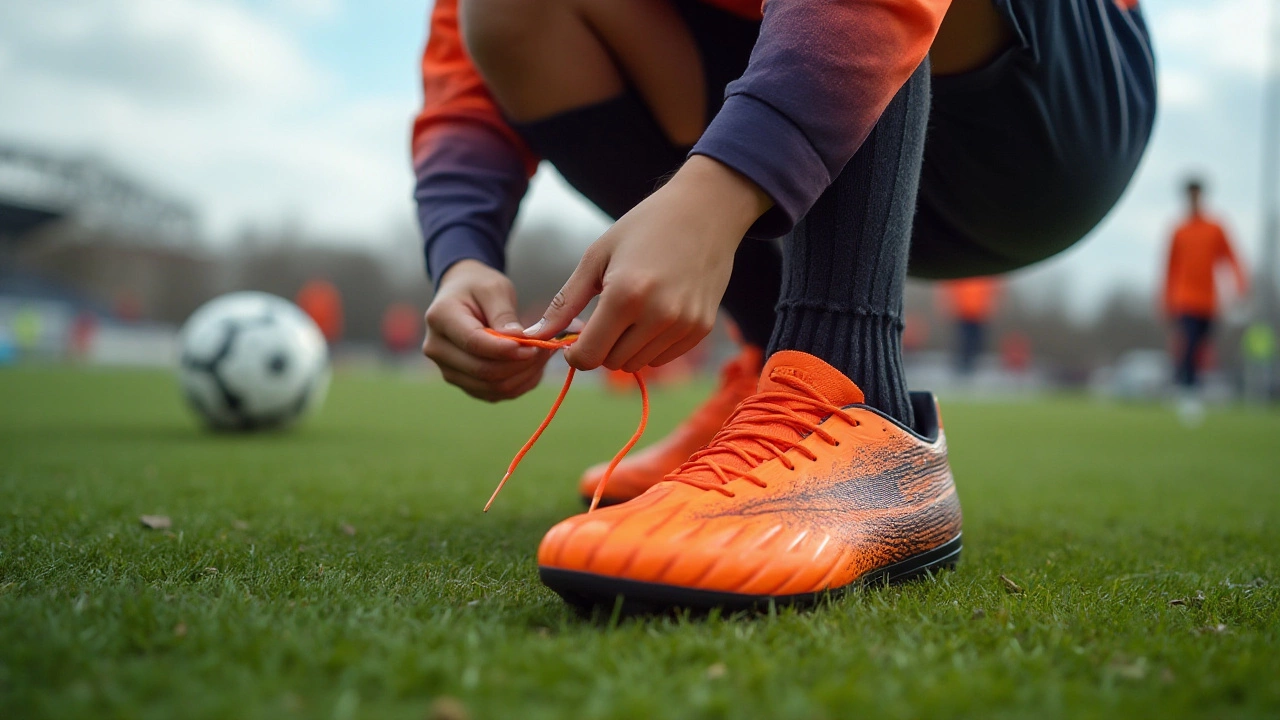Football Gear Essentials: What You Need to Play Like a Pro
Ever walked onto a pitch and felt like something was missing? Chances are you didn’t have the right football gear. The right boots, ball, and protection can turn a good game into a great one. Below you’ll find practical tips that work for beginners and seasoned players alike.
Choosing the Right Ball and Boots
The first piece of football gear you’ll reach for is the ball. Size 5 is standard for adults, while size 4 fits younger players. Look for a stitched or thermally‑bonded surface – stitched balls last longer on rough fields, but bonded ones stay true in wet conditions.
Boots are next on the list. Your choice depends on the surface you play on. Firm‑ground (FG) studs give grip on natural grass, while artificial‑ground (AG) shoes handle synthetic turf without tearing up. If you play on hard indoor floors, opt for a turf shoe with small rubber studs. Fit matters more than brand; the boot should hug your foot without squeezing, allowing a little wiggle room for your toes.
Protecting Yourself and Enhancing Performance
Protection is a non‑negotiable part of football gear. A good pair of shin guards can prevent bruises and fractures. Look for guards that slide into a snug pocket on your socks – that keeps them in place when you sprint.
Gloves are often overlooked, but they help with grip in rainy matches. Choose a pair with a breathable palm and a snug fit to avoid slipping. For colder weather, a lightweight, moisture‑wicking jersey will keep you warm without overheating.Beyond basics, consider accessories that boost performance. An ankle brace adds stability if you’ve had past injuries. A simple resistance band can be attached to a goal post for warm‑up drills, turning any practice into a focused session.
Now that you know what to look for, here’s a quick checklist to keep in mind when shopping for football gear:
- Ball: size 5, stitched or bonded based on field condition.
- Boots: FG for grass, AG for synthetic turf, turf shoes for indoor play.
- Shin guards: snug fit, secure pocket.
- Gloves: breathable palm, firm grip.
- Optional extras: ankle brace, moisture‑wicking jersey, resistance bands.
When you buy, test the gear if you can. Walk around the store, kick a ball, and make sure everything feels comfortable. Online reviews help, but nothing beats a quick try‑on.
Budget doesn’t have to limit quality. Many reputable brands offer entry‑level kits that include a ball, boots, and shin guards for a reasonable price. Look for sales at the end of the season – that’s when shops clear out older models.
Finally, maintain your gear to extend its life. Rinse boots after muddy games, air‑dry shin guards, and keep the ball stored in a cool, dry place. A little care now saves you money later.
With the right football gear in hand, you’ll feel more confident, move faster, and stay safer on the pitch. Grab your essentials, hit the field, and play the game the way it’s meant to be enjoyed.

Understanding Football Sports Equipment for Optimal Performance
Maeve Larkspur Oct 1 0The world of football sports equipment is vast, encompassing everything from protective gear to footwear and balls. Each piece of equipment plays a crucial role, not just for player safety, but also in enhancing performance on the field. Football gear has evolved over the years, becoming more specialized to meet the needs of various playing conditions and levels. This article explores the essential types of football equipment, their purpose, and how to choose them wisely for the best game experience.
More Detail